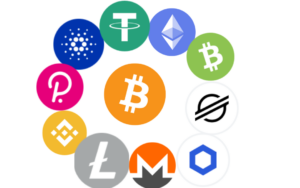The approval of Bitcoin ETFs has significantly influenced the crypto market, driving institutional adoption to new heights. Major financial firms like BlackRock and Fidelity have entered the space, holding billions in Bitcoin assets. These ETFs provide a regulated investment vehicle, allowing traditional investors to gain exposure to Bitcoin without directly holding the asset. This shift has contributed to Bitcoin’s price surge, with predictions suggesting it could reach $123,000 by the end of 2025.
Institutional adoption extends beyond ETFs, with major corporations integrating Bitcoin into their treasury strategies. Companies like Tesla and MicroStrategy continue to hold substantial Bitcoin reserves, reinforcing its legitimacy as a store of value. Additionally, pension funds and sovereign wealth funds are exploring crypto investments, further solidifying Bitcoin’s role in global finance.
Regulatory Clarity and Market Stability
Regulatory frameworks are evolving, with governments worldwide working to establish clearer guidelines for crypto assets. The U.S. presidential election in 2024 played a pivotal role in shaping the regulatory landscape, with President-elect Donald Trump advocating for a more crypto-friendly environment. This regulatory clarity is expected to boost investor confidence and attract new participants to the market.
Beyond the U.S., other nations are refining their crypto regulations. The European Union’s MiCA framework is set to provide comprehensive oversight, ensuring consumer protection and market integrity. Meanwhile, countries like Singapore and Hong Kong are positioning themselves as crypto hubs, offering favorable regulatory environments for blockchain innovation.
The Rise of Stablecoins
Stablecoins continue to gain traction, offering a bridge between traditional finance and the crypto ecosystem. Their use in cross-border transactions and digital payments is expanding, with central banks exploring their integration into financial systems. The demand for stablecoins is driven by their ability to provide price stability while maintaining the benefits of blockchain technology.
The introduction of central bank digital currencies (CBDCs) is further shaping the stablecoin landscape. China’s digital yuan is already in circulation, while the U.S. Federal Reserve is researching a digital dollar. These developments highlight the growing convergence between fiat currencies and blockchain-based assets.

Tokenization of Real-World Assets
The tokenization of assets such as real estate, art, and commodities is revolutionizing investment opportunities. By enabling fractional ownership, tokenization enhances liquidity for traditionally illiquid assets. This trend is expected to accelerate in 2025, with more industries adopting blockchain-based solutions for asset management.
Luxury brands and financial institutions are also exploring tokenization. Companies like Louis Vuitton and Rolex are leveraging blockchain to authenticate high-value goods, reducing counterfeiting risks. Meanwhile, investment firms are tokenizing private equity and debt instruments, broadening access to alternative investments.
Layer 2 Scaling Solutions for Crypto
Ethereum’s scalability challenges have led to the rise of Layer 2 solutions, such as Optimistic and ZK Rollups. These technologies improve transaction speeds and reduce costs, making decentralized applications more efficient. As adoption grows, Layer 2 solutions will play a crucial role in Ethereum’s continued dominance in the blockchain space.
Beyond Ethereum, other blockchains are implementing scaling solutions. Solana and Avalanche are optimizing their networks to handle higher transaction volumes, while Bitcoin’s Lightning Network is gaining traction for micropayments. These advancements are essential for mainstream adoption and usability.
Artificial Intelligence in Crypto
AI-driven technologies are transforming the crypto landscape, enhancing security, fraud detection, and smart contract automation. AI-powered analytics tools help investors make informed decisions, while decentralized AI models contribute to the development of autonomous financial systems. The intersection of AI and blockchain is expected to unlock new efficiencies and innovation.
AI is also playing a role in predictive market analysis. Hedge funds and trading firms are utilizing machine learning algorithms to forecast price movements, optimizing trading strategies. Additionally, AI-driven security protocols are mitigating risks associated with smart contract vulnerabilities and cyber threats.
Memecoins and Social Influence
Memecoins, fueled by viral social media moments and celebrity endorsements, continue to shape market dynamics. While some view them as speculative assets, their popularity highlights the growing influence of digital communities in the crypto space. The rise of memecoins underscores the importance of sentiment-driven investment strategies.
Platforms like Twitter and Reddit play a crucial role in memecoin trends. Influencers and online communities drive price movements, creating opportunities for traders. Despite their volatility, memecoins reflect the evolving nature of digital assets and the power of decentralized social engagement.





